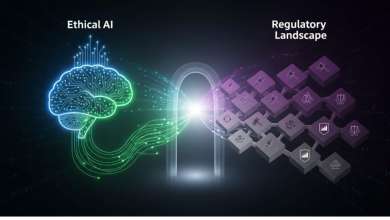
It seems almost unbelievable that generative AI, as a publicly available tool, is less than three years old. While, yes, AI has underpinned much of marketing for years, it was under the hood and, to be fair, much less powerful than what we experience today.
While some consider AI in advertising as a theoretical technology that will make big strides and have a big impact later on, for several forward-thinking brands and publishers, it’s already a core feature of creative production and media buying. And yet, only 30% of media agencies and brands have incorporated AI into their media campaign lifecycle, according to the IAB.
Those who are on the forefront of AI usage have an incredible jumpstart on those who are waiting on the sidelines. Especially considering the expected leap the technology is expected to take in the next 18 months or so.
The current AI state of play
Creative AI has grown leaps and bounds and is on the cusp of creating near limitless variations of content, which will eventually be tailored and customized down to the individual customer. There’s already some established examples from Coca-Cola, H&M, and others.
On the media buying side, platforms like Meta, Netflix, and Google have introduced AI-driven ways to pick programming and insert ads around resonant content.
Agencies are getting in the act as well. WPP announced what it calls the first-ever “large marketing model” (LMM – instead of LLM) that uses AI to pull data from 75 markets to “predict audience behavior and market performance.”
And it’s helping brand safety. Google says blocked or removed 5.1 billion bad ads in 2024, thanks to large‑scale machine‑learning classifiers. Separately, Spotify and Integral Ad Science now screen more than five million podcast episodes pre‑bid in 90+ languages.
Already, AI has made quite an impact on the overall marketing business. But the real revolution is on the horizon. Here are some of the ways it will irrevocably change the jobs and focus of the marketing executives of tomorrow.
Cheaper, coherent video generation: The mileage has varied on recent attempts to generate fully coherent videos from prompts – Kalshi’s NBA Finals ad was purposefully outrageous and therefore worked. But the technology is getting better and better. It is early days, but we’ve already seen AI generate 15-30 second quality videos on par with what a creative shop could do. Once that proliferates, it may completely alter what it means to be a creative shop.
Better software coding assistants: By now, you’ve likely heard of vibe coding, which builds code based on natural language prompts. This will democratize software development, making it easier to write or customize software while reducing costs. It will also make it possible for non-technical employees to have a greater hand in software development. As a result, agencies and advertisers may be much more able to develop their own tools to better manage their creatives and campaigns.
True “agentic” AI capabilities: OpenAI’s “Agent,” released in July, can increasingly take direct actions using computers and conduct more complicated tasks than just returning an answer. Companies will depend on these tools to remove manual, but important work from their employees’ responsibilities, like filling out spreadsheets, sending emails, and taking and summarizing notes.
MCP/tool use: The future of advertising will increasingly run on APIs, where advertisers, platforms, and publishers make connections and share information seamlessly. AI can better pull data from different locations, leading to improved campaign automation and better targeting. Platforms, tools, publishers, and advertisers with limited APIs will get de-prioritized out of the main buying patterns.
Agentic advertising / media buying: Meta promises to fully automate ad creation and targeting by 2026. If this comes to bear, advertisers merely need to upload a product image and budget while AI handles the rest. The rest of the platforms won’t be far behind. Creative teams will focus their efforts on higher-profile brand building and campaign managers on higher-level strategy.
These AI-driven changes will fundamentally change how all organizations approach their operations, employees, and products.
Here are some shifts that are likely to happen:
Chief AI Officer
A lack of comprehensive AI strategy can inhibit a company’s ability to compete in a rapidly changing battlefield. Several companies have created an AI officer role tasked with managing top-and-bottom-down AI workflows.
Staffing: Make no mistake: AI will fundamentally alter how agencies staff their accounts. Companies, especially agencies, will need to rethink how they hire junior employees and what they’re tasked with doing. While AI tools will render many of the tasks, they previously handled obsolete, there is still value in greener talent for today and for future succession planning. It is incumbent on those new entrants into the workforce to learn and demonstrate their AI prowess.
Mindset shift: First of all, they may need mindset shifts to embrace the power of AI to extend their creative in new and exciting ways. They will need to audit their AI capabilities and toolsets and potentially reskill planners to become prompt engineers and model auditors. Now is not the time to hold onto laborious, manual processes.
Workflows: Agencies will soon be able to generate an incredible variety of creatives with a click of a button and an intelligent media tool. They will need to change their workflows to make sure they can manage approvals and keep up with the technology’s ability to make changes on the fly to allocation and targeting.
Data: Companies that are sitting on piles of data – whether its structure or unstructured – are already ahead of the game. Since AI can only optimize what exists, companies should clean and audit their first‑party data so they can optimize their operations and campaigns more effectively.
Bottom Line
The window to act is open—but it is closing fast. The proof is definitive: the next 18 months will unleash a new evolution in how companies operate – and especially how they handle marketing. Every organization in the advertising ecosystem must leverage AI to build a competitive moat and also increase efficiency so they can invest more of their revenue into driving superior results for their clients.
Upwave CTO George London bio
George is a seasoned technology leader who has spent his whole career helping companies use data to make better decisions. George started his career doing macroeconomic modeling and investment research at Bridgewater Associates (the world’s largest hedge fund), and then founded a startup that used data to help consumers explore and discover music.
As one of Upwave’s first engineering hires, George originally joined Upwave with the mission of building Upwave’s statistical capabilities from scratch. Since then he’s grown with the company to become Head of Data, then Vice President of Engineering, and now CTO. In his years at Upwave, George has both contributed to nearly every aspect of Upwave’s systems and product and has also hired, managed, and coached Upwave’s entire technical team.
George holds a BA in Philosophy from Yale University and lives in Oakland with his wife and labradoodle. George’s earliest brand loyalty was to Nintendo, who filled his childhood with endless hours of delight and still sparks joy and wonder to this day.





